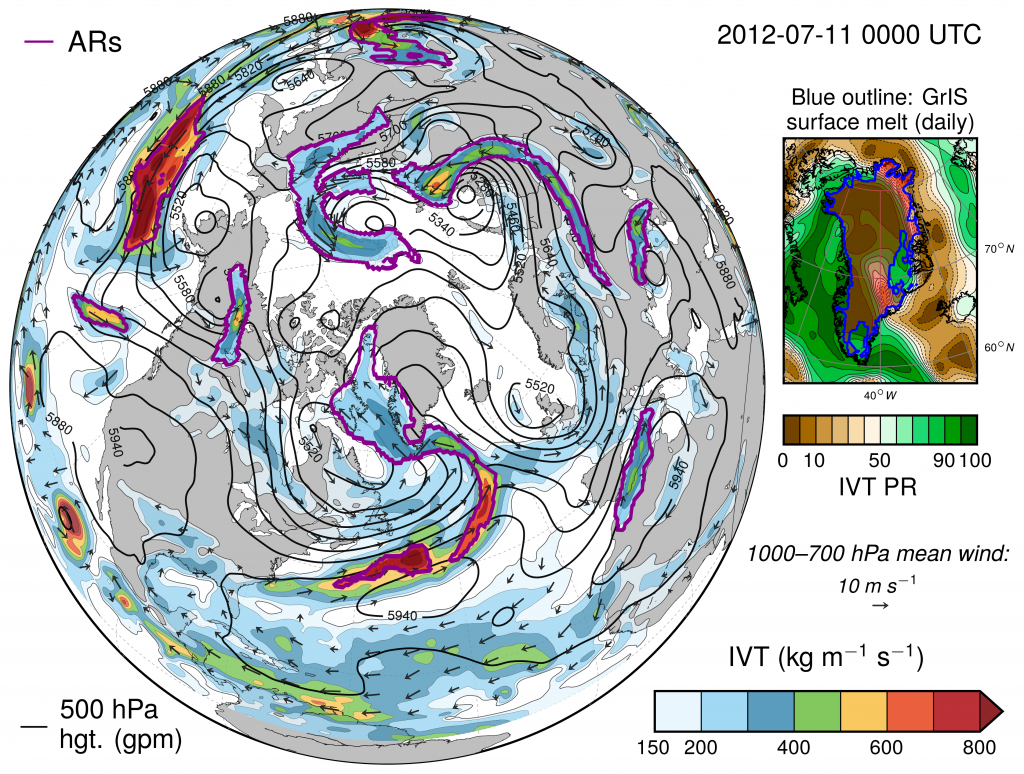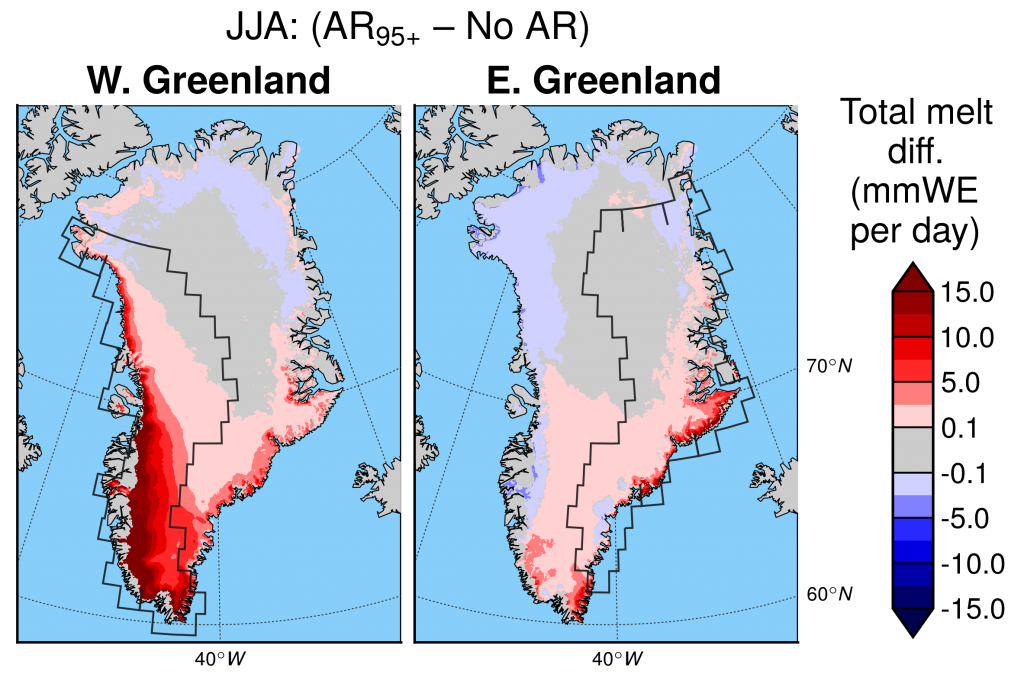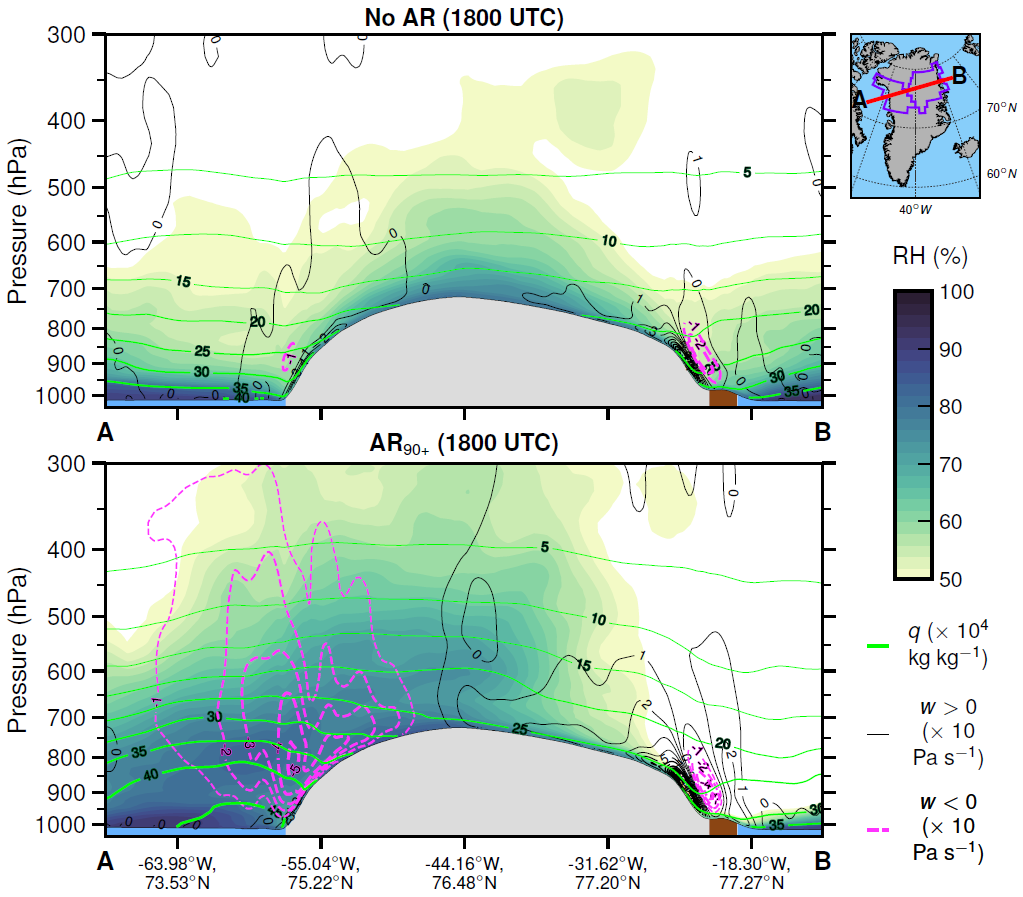Greenland Ice Sheet
Atmospheric moisture transport, blocking, and the Greenland Ice Sheet
The Greenland Ice Sheet has been losing ice mass and contributing to sea level rise at an increasing rate since the late 1990s. My research investigates the role of extreme atmospheric conditions, including moisture transport by “atmospheric rivers” (ARs) and blocking high pressure, in the ice sheet’s mass loss. My colleagues and I have found that summer moisture transport by ARs to Greenland has increased alongside mass loss, and that strong ARs produce intense short-term ice surface melt events. Our ongoing and planned future studies examine the evaporative moisture sources for Greenland ARs, the representation of ARs and Greenland blocking patterns in climate models, and their relationships with Arctic sea ice cover.

From Mattingly et al. 2018, Journal of Geophysical Research: Atmospheres, Copyright 2018 AGU.


From Mattingly et al. 2020, Journal of Climate, © Copyright 2020 AMS.
Read more:
- Mattingly et al., 2015 (International Journal of Climatology): A climatological assessment of Greenland blocking conditions associated with the track of Hurricane Sandy and historical North Atlantic hurricanes
- Mattingly et al., 2016 (Geophysical Research Letters): Increasing water vapor transport to the Greenland Ice Sheet revealed using self-organizing maps
- Oliver et al., 2018 (Journal of Geophysical Research: Oceans): Exploring the potential impact of Greenland meltwater on stratification, photosynthetically active radiation, and primary production in the Labrador Sea
- Mattingly et al., 2018 (Journal of Geophysical Research: Atmospheres): Atmospheric river impacts on Greenland Ice Sheet surface mass balance
- Ballinger et al., 2019 (The Cryosphere): Greenland Ice Sheet late-season melt: Investigating multi-scale drivers of K-transect events
- Akers et al., 2020 (Atmospheric Chemistry and Physics): Baffin Bay sea ice extent and synoptic moisture transport drive water vapor isotope (δ18O, δD, d-excess) variability in coastal northwest Greenland
- Mattingly et al., 2020 (Journal of Climate): Strong summer atmospheric rivers trigger Greenland Ice Sheet melt through spatially varying surface energy balance and cloud regimes